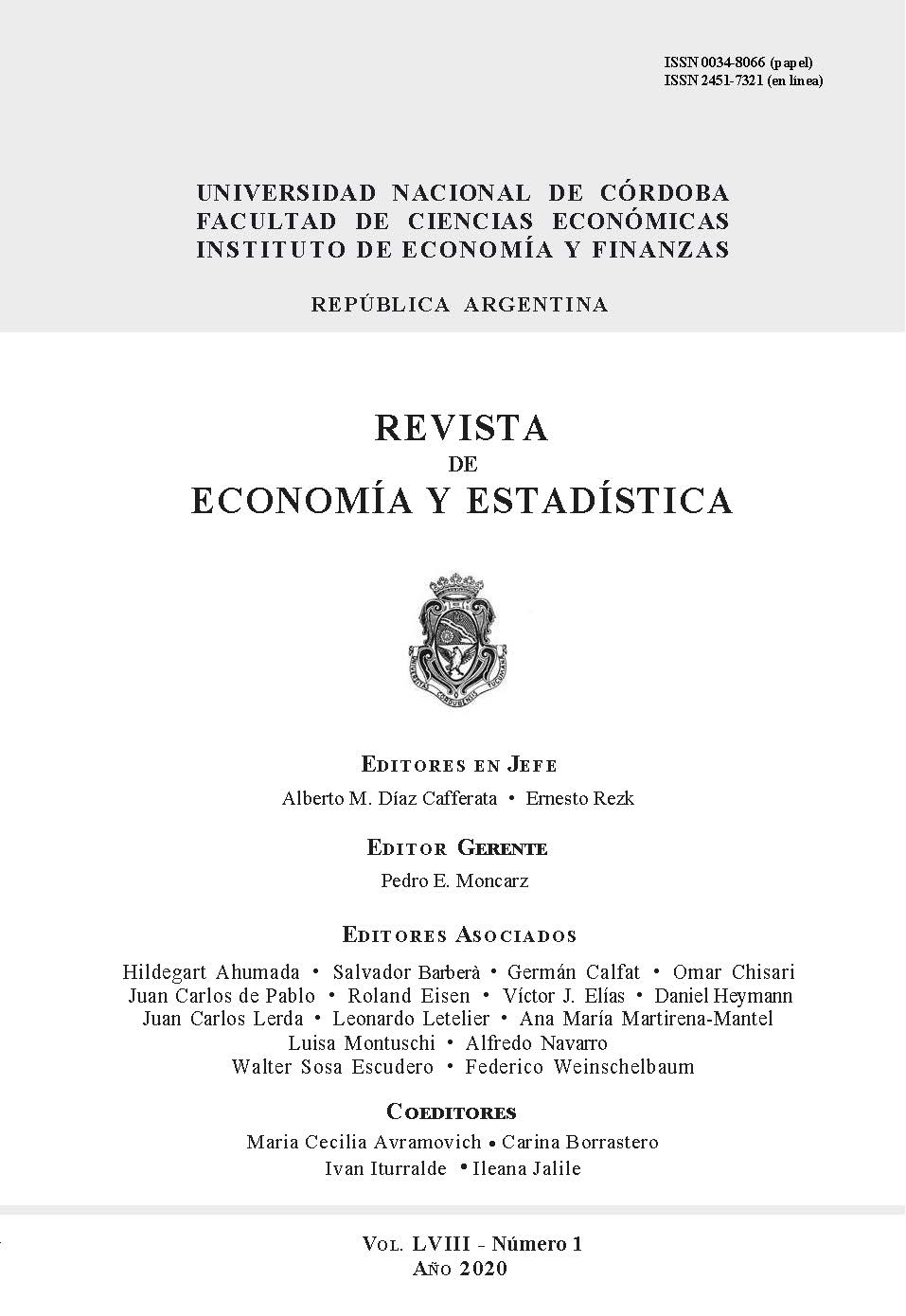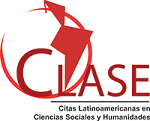Technological Strategy and Work Organization: Specificities of the Argentine Manufacturing Industry
DOI:
https://doi.org/10.55444/2451.7321.2020.v58.n1.31868Keywords:
technology, work organization, manufacturing, industry, technological strategyAbstract
Technological strategy of the companies and the different aspects of work organization contribute to the specificity and potential for incorporation of new technologies in the Argentine industry. In order to study the relationship between technological strategies and the characterizing features of work organization in industrial companies, information from the National Survey of Employment and Innovation Dynamics for industrial companies in Argentina 2010-2012 is analyzed. It is concluded that the development of more complex technological strategies requires work organization structures and processes where learning plays a key role.
Date received: March 19, 2020
Acceptance date: May 28, 2020
Downloads
References
Brixner, C., Isaak, P., Mochi, S., Ozono, M. y Yoguel, G. (2019). Industria 4.0: ¿Intensificación del paradigma TIC o nuevo paradigma tecnoorganizacional?. Documento de Trabajo Nro. 17, Centro Interdisciplinario de Estudios en Ciencia, Tecnología e Innovación.
Carlsson B, Eliasson G. (1991). The nature and importance of economic competence. Working Paper Nro. 294, Industrial Institute for Economic and Social Research, Stockholm.
Chamanski, A. y Waago, S. (2001). Organizational performance of technology-based firms. The role of technology and business strategies. Enterprise and Innovation Management Studies, 2(3), 205-223.
Christenson, J. (2002). Corporate strategy and the management of technology and innovation. Industrial and Corporate Change, 11(2), 263-288.
Cohen, W., & Levinthal, D. (1989). Innovation and learning: the two faces of R & D. The Economic Journal, 99(397), 569–596.
Cohen, W., & Levinthal, D. (1990). Absorptive Capacity: A New Perspective on Learning and Innovation. Administrative Science Quarterly, 35(1), 128–152.
Dasgupta, M., Gupta, R. K., & Sahay, A. (2011). Linking technological innovation, technology strategy and organizational factors: A review. Global Business Review, 12(2), 257–277.
Dosi G, Teece DJ. (1993). Organizational competencies and boundaries of the firm. University of California at Berkeley.
Erbes, A., Roitter, S., Kababe, Y. (2013). El rol de la organización del trabajo en el desarrollo de procesos de aprendizaje. En F. Barletta, V. Robert y G. Yoguel (Comps.), Tópicos de la teoría evolucionista neoschumpeteriana de la innovación y el cambio tecnológico, Vol. 1, UNGS – Miño y Dávila Editores (287-317).
Erbes, A.; Roitter, S., Delfini, M. (2008). Conocimiento, organización del trabajo y empleo en tramas productivas. Revista de Trabajo. Nueva Época, 4(5), 73-86.
Erbes, A.; Roitter, S., Delfini, M. (2011). Organización del trabajo e innovación: un estudio comparativo entre tramas productivas argentinas. Economía Teoría y Práctica, 34, 101-132.
Hambrick DC. (1983). Some tests of the effectiveness and functional attributes of Miles and Snow’s strategic types. Academy Management Journal, 26 (5-26).
Lazonick, W. (2016). Innovative Enterprise or Sweatshop Economics? In Search of Fundamentions of Economic Analysis. AIR Working Paper Nro. 15-1101.
Leten, B., Belderbos, R., & Looy, B. Van. (2007). Technological Diversification, Coherence, and Performance of Firms. The Journal of Product Innovation Management, 24(6), 567–579.
McDaniel S. W. y Kolari, J. W. (1987). Marketing strategy implications of the Miles and Snow strategic typology. Journal Marketing, 51, 19–30.
Malerba, F. y Marengo L. (1995). Competence, innovative activities and economic performance in Italian high-technology firms. International Journal of Technology Management, 10(4/5/6), 461– 77.
Mariotti, S. (2000). Nuevos paradigmas tecnológicos. En F. Boscherini y L. Poma (Comps.), Territorio, conocimiento y competitividad de las empresas: el rol de las instituciones en el espacio global. Miño y Dávila Editores.
Ministerio de Ciencia, Tecnología e Innovación Productiva-Ministerio de Trabajo, Empleo y Seguridad Social (2015). Encuesta Nacional de Dinámica de Empleo e Innovación (ENDEI) 2010-2012.
Nelson, R. R. (1991). Why do firms differ, and how does it matter?. Strategic Management Journal, 12(S2), 61–74.
Peres Núñez, W. y Hilbert, M. R. (eds.) (2009). La sociedad de la información en América Latina y el Caribe: desarrollo de las tecnologías y tecnologías para el desarrollo. Libros de la CEPAL.
Ritter, T., Gemünden, H. (2004). The impact of a company’s business strategy on its technological competence, network competence and innovation success. Journal of Business Research, 57, 548–556.
Roitter, S.; Erbes, A., Rodriguez Miglio, M. (2013). La importancia de la organización del trabajo para el desarrollo de procesos de aprendizaje en las empresas: el caso del sector de software y servicios informáticos [Ponencia]. XVIII Reunión Anual de la Red PyMEs MERCOSUR, Resistencia, Argentina.
Roitter, S.; Erbes, A., Kababe, Y. (2012). Procesos de aprendizaje en el sector servicios: ¿nuevas formas de organización del trabajo?. En D. Suárez (Comp.), El sistema argentino de innovación: instituciones, empresas y redes. El desafío de la producción y la apropiación de conocimiento, UNGS.
Roitter, S.; Erbes, A.; Pujol, A.; Rodriguez Miglio, M., Delfini, M. (2011). La calidad del empleo en actividades manufactureras: un análisis de la perspectiva de los trabajadores automotrices y de la alimentación [Ponencia]. 11º Congreso Nacional de Estudios del Trabajo, Ciudad Autónoma de Buenos Aires, Argentina.
Roitter, S., Erbes, A. (2010). La organización del trabajo en empresas de servicios: un análisis desde la perspectiva de los trabajadores [Ponencia]. 15º Reunión Anual de la Red PyMEs MERCOSUR, Mendoza, Argentina.
Roitter, S.; Erbes, A.; Yoguel, G.; Delfini, M., Pujol, A. (2007). Competencias endógenas y vinculaciones en agentes pertenecientes a las tramas productivas automotriz y siderúrgica. Economía Teoría y Práctica, 26, 69-118.
Schumpeter, J. (1947). The creative response in economic history, Journal of Economic History, 7, 149-159.
Teece, D., & Pisano, G. (1994). The Dynamic Capabilities of Firms: an Introduction. Industrial and Corporate Change, 3(3), 537–556.
Teece, D., Pisano, G., & Shuen, A. (1997). Dynamic capabilities and strategic management. Strategic Management Journal, 18, 509–534.
World Economic Forum (2016). The future of jobs: employment, skills and workforce strategy for the fourth industrial revolution, Global Challenge insight report. World Economic Forum, Geneva.
Zahra, S. A. (1996). Technology strategy and financial performance: Examining the moderating role of the firm’s competitive environment. Journal of Business Venturing, 11(3), 189–219.
Downloads
Published
How to Cite
Issue
Section
License
Copyright (c) 2020 Analía Erbes, Sonia Roitter

This work is licensed under a Creative Commons Attribution-NonCommercial-NoDerivatives 4.0 International License.
Authors who have publications with this journal agree to the following terms:
Authors retain their copyright and grant the journal the right of first publication of their work, which is simultaneously subject to the Creative Commons Attribution-NonCommercial-NoDerivatives 4.0 International License that allows third parties to share the work provided that its author and first publication in this journal are indicated.
Authors may adopt other non-exclusive licensing arrangements for distribution of the published version of the work (e.g. depositing it in an institutional telematic archive or publishing it in a monographic volume) as long as the initial publication in this journal is indicated.
Authors are allowed and encouraged to disseminate their work via the Internet (e.g. in institutional telematic archives or on their website) before and during the submission process, which can lead to interesting exchanges and increase citations of the published work. (See The Open Access Effect)









